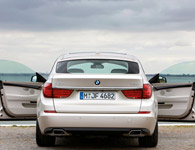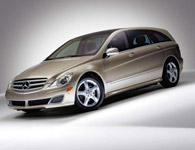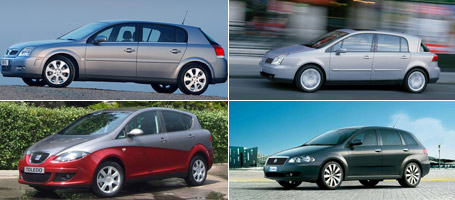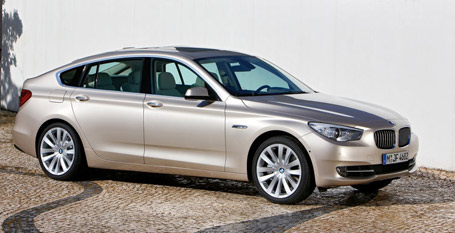Remember the good old times when Mercedes were just building luxury sedans and some coupes, while Porsche were just focused on 911s. Those days are firmly behind us now as car manufacturers are determined to have every market segment covered. Apparently, this sort of “market diversification” is necessary to create more brand awareness and eventually sale volumes (read: profits). One would recall Porsche citing the introduction of the Cayenne as necessary for the German sports brand to remain independent.

Call it shrewd business strategy or a twisted tale for survival; we have been recipients of some cars that can be interesting or worse, pointless. For instance, traditionally large executive cars were in the form of three boxes, commonly known as a sedan, or a saloon. According to Renault, being conventional was not an option for mainstream brands to penetrate the upmarket segments. Hence the Renault Vel Satis, a luxury hatchback with hints of a MPV back in 2000.
But how does one explain the 2009 BMW 5-series Gran Turismo, aka 5-series GT? A car that looked like a grafting the rear of a X6 onto the front of a 5-series saloon. BMW claims that the 5-series GT will bring us limousine legroom, SUV headroom and an elevated driving position. Is that truly possible given the shallow coupe-like glasshouse, which was a deliberate move to avoid the utilitarian appearance of a Mercedes R-Class. Yes, BMW has now two hatchbacks in its range, the 1-series and now the much larger 5-series GT.

And when a premium brand like BMW goes into the luxury hatchback sector, be assured that several mainstream brands will follow closely to its party (or funeral). Look at what Honda and Toyota is doing with the 2009 Honda Accord Crosstour (top, right) and the Toyota Venza (top, left). They need all these initial buzz in spades to succeed, before consumers realize that all they wanted are just a wagon or just a SUV.
Yes, these cars are created because there is some truth in someone’s market research that there are some people who will not pick a SUV as their next car (even though, they needed the “utility”). Driving a SUV has become a conspicuous affair for these folks, which we suspect could be vegan lesbians or new gay dads. Believe it or not, car manufacturers have spotted a weak spot among these LGBTs; infants.

As you can tell by now, the idea of a luxury hatchback is new and to their target audience, they are like infants, too “cute” to resist. These ugly but adorable cars will succeed among these children-loving LGBTs and eventually, the heterosexual groupies will start forming queues for one. And that will be automobile “HELL” for us all. Now, who do we blame? The French? Or the Germans? We’d say the Germans. The BMW 5-series GT has revived the “Vel Satis” concept with true abilities and some appeal.
There will be no mistaking the 5-series GT for anything else but a BMW from the front and rear ends. However, the single most challenging aspect of the 5-series GT’s looks would be the slab sides. The boys at Munich must be seriously wasted when they turned to the Toyota Prius for inspiration on how to design a hatchback profile. The penalty for carrying such massive amount of metal along the sides means even the largest 20” wheels can be dwarfed.
The BMW 5-series may look awkward, but it has certainly avoided looking like a MPV. Which it is most certainly not, when you realize that it carries no more than five, actually four in comfort and has a paltry 440 litre boot. And the shocking thing is that it is based on the mechanical architecture of the 7-series and priced as a 5-series. Just what is BMW trying to achieve here? More market mass to justify the development cost of the 7-series?

Or is the BMW 5-series GT conceived to take on the Mercedes R-class? BMW need not take aim at the Mercedes R-class, because Mercedes is clearly not doing so great with its oddball MPV. Latest news is that Mercedes will give the R-class a drastic facelift rather than giving it new hardware with the ML/GL in 2010. The plan is to give the facelifted R-class 4 years to prove that R-class II is financially viable. Clearly, we should be expecting the death cert of the R-class in the near future.
Given the success and dominance of BMW’s 5 and 7 series sedans and the X5 SUV, the existence of the 5-series GT just does not add up. Just when we are starting to rekindle our love affair with BMW’s new styling direction with the new Z4 and the X1 under new design director, Adrian van Hooydonk, they start pushing the envelope of acceptance. It’s most certainly not us embracing new automobile ideas, but the 5-series GT feels more like BMW is answering questions that no one is asking.

The failed class of bizarros; from anti-clockwise top right: Renault Vel Satis (2000). Vauxhall Signum (2003-2008), Seat Toledo (since 2004), Fiat Croma (since 2005)

